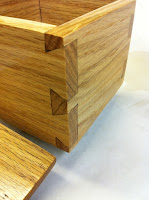This post is more of a question than an actual blog entry, but this site is intended to be everything I am doing in the woodshop, so here it goes.
This evening I purchased a honing jig and my first 800/4000 grit combination Japanese water stone, from our local Rockler affiliate store. To this point I have been using freehand scary sharp for my sharpening system, with moderate success. I felt the honing jig may help correct some of the inconsistencies I’ve been experiencing with my results. The water stone is intended to expand my horizons, increase my final polish grit and admittedly because most everyone seems to feel they are the shizzal.
First off let me say that my current stable of chisels is full of sway back nags way past their primes and/or glue worthy steeds straight out of the chute. I have four (4) Stanley’s that my father purchased sometime back in the late 60’s or early 70’s. These chisels have been through quite a bit and are in need of serious restoration, but that is exactly what I am trying to do, if only for sentimental reasons. My newer chisels are Stanley Fat Max chisels straight off Lowe’s shelves. I have put these chisels through the scary sharp system a couple of times and have on occasion had them fairly sharp for a brief moment. As I am sure is the case with many of the lower quality chisels the darn things simply will not hold an edge for more than two (2) or three (3) mallet blows.
Anyway, on to the question…
Yesterday while beginning restoration of my father’s old 1” chisel I notice the cutting edge wasn’t square. In order to correct the issue I use a small file and squared the end of the chisel. As I expected, this process left a flat surface on the cutting edge of the chisel. As I began reshaping the edge freehand I got frustrated with my results, because the edge seemed to be skewing as I proceeded. While I’d wanted one for some time, this is where I got justification for the honing jig. There is no justification for the water stone, so I’ll probably pay double for that one when it’s discovered.
Let me say I think once I master the honing jig I am going to love it. It definitely makes holding the correct angle a breeze. I can clearly see the difference in consistency in the scratch pattern on the bevel. My problem and therefore my question, is that the bevel plane and backplane never seem to get closer to intersecting and the right corner of the bevel continues to maintain a visible flat. I know based on all the videos and positive discussions I have read online it is most likely not the honing jig and is more likely error on my part. Can anyone provide suggestions or scenarios that may correct or cause this issue? I am stumped.
I will not begin to use my water stone until I get this is figured out because I am afraid I may damage the stone if it’s a technique or knowledge issue. PLEASE! Any assistance, guess or enlightenment is greatly appreciated!!!
Until my next post,
Keep Your Mind on your Fingers and your Fingers on your Hands!!!



















